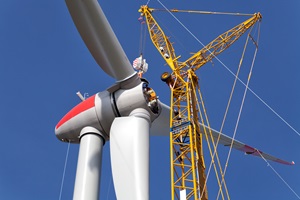- Mergers Acquisitions
- Wind Turbine Vendors
- Energy Technologies
- Energy Technologies
Gamesa Acquisition Could Stir Up Wind Turbine Vendor Dynamics

The strongest reason for this acquisition is that Siemens’ wind business is weakest in the areas where Gamesa is strongest, such as India, Mexico, and Brazil. These are the key countries that Gamesa pivoted to when its home market in Spain collapsed in 2012 and 2013 due to austerity measures and energy policy reforms that terminated wind price supports.
In 2014 yearly installation figures, Gamesa had 21.5% market share in Brazil, just behind General Electric’s (GE’s) 22.2%, while Siemens was in fourth place with 15.7%. In Mexico, Gamesa was the market leader with 72.6% market share, followed next in line by Vestas, while Siemens had no installations. In India, Gamesa led market share installation in 2014 with 32%, outperforming India-based Suzlon at 28%—and again, no Siemens installations.
Smoothing the Bumps
These three countries are important growth markets for turbine vendors, and diversification across geographies helps vendors smooth out booms and busts driven by changes in country energy policies. Market diversification is precisely why Nordex of Germany is in the process of acquiring Spain-based Acciona’s wind turbine business, which not coincidentally is also strong in the Latin American markets. A Siemens acquisition of Gamesa could even be viewed as a strategic counterweight against the Nordex acquisition of Acciona. This is a similar example of a turbine OEM with concentrated strength in Northern Europe acquiring another vendor in order to diversify business and cushion overreliance on limited European markets.
Gamesa and Acciona are also, arguably, homeless. While both companies have always had strong export strategies, they have not had the benefit of the strong home markets enjoyed by most of their competitors. Preliminary Guidehouse Insights data shows zero new installed wind capacity in Spain in 2015.
Gamesa has enjoyed success in the U.S. market, but it has lagged behind the big three of GE, Vestas, and Siemens. Again looking at 2014 installation metrics, Gamesa had only 4% of U.S. market share compared to Siemens at 20.7% (although it should be noted that Gamesa inked 518 MW of orders for the U.S. market in the second half of 2015 and continues to secure healthy sales). However, the company has sharply reduced its manufacturing and supply chain presence in the United States and now relies on exports of nacelles from Spain and outsources blades and towers. There is not much supply chain overlap with Siemens in the United States, which has substantially more manufacturing presence in the country.
Offshore is probably the most fascinating and problematic area of overlap. Gamesa is in a 50/50 joint venture (JV) called Adwen with French company Areva. Adwen’s technology is based on Areva’s geared medium speed technology (formerly Multibrid). This is a proven and competitive drivetrain with 600 MW installed in 2015, and there is over 1 GW of orders booked for projects outside of France. It would be difficult to imagine the JV continuing as-is if Gamesa was acquired by Siemens, which is already the world leader in offshore wind. Adwen could continue solely as an Areva company, but this would be challenging, and a replacement partner could be a wise choice.